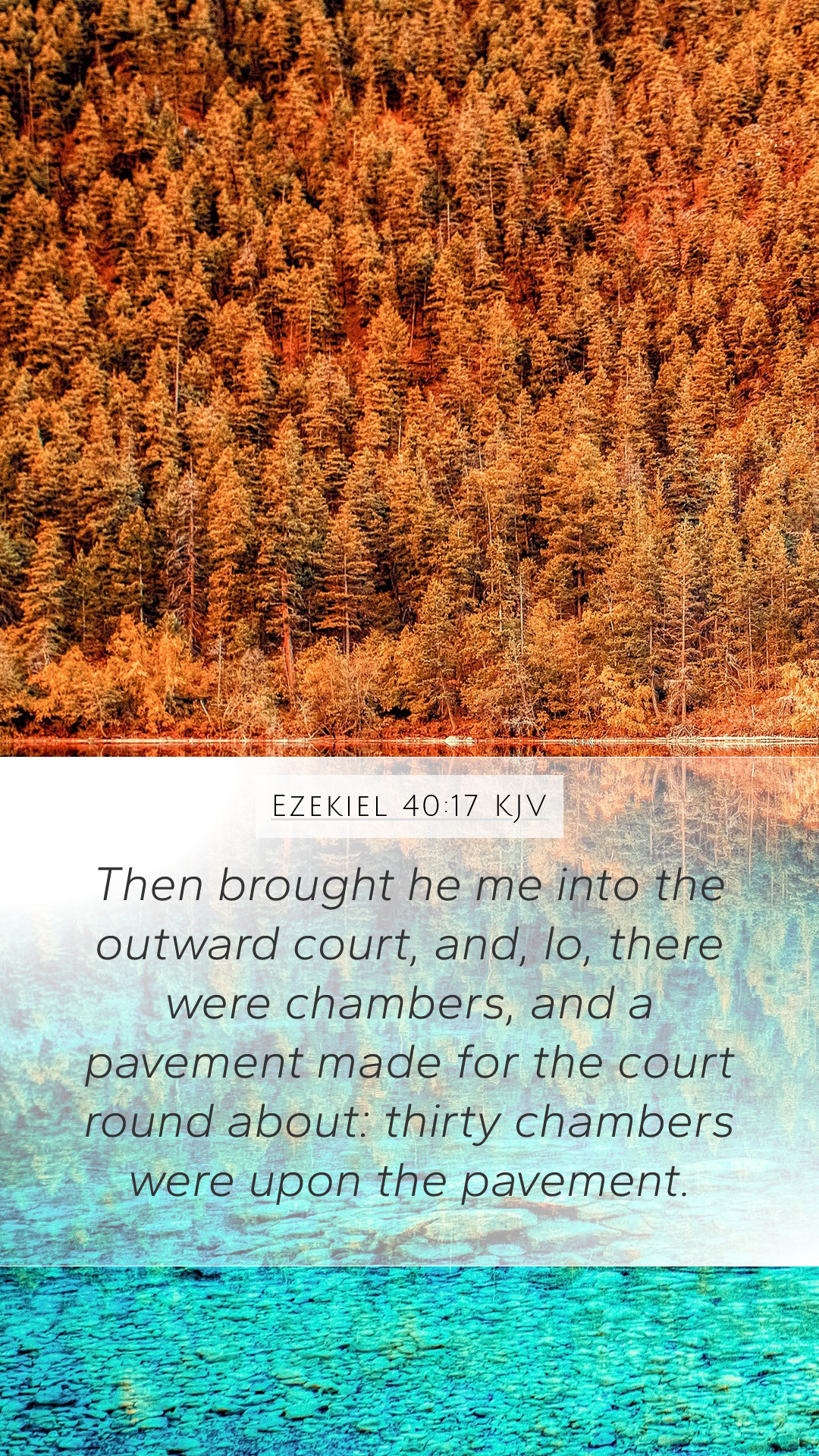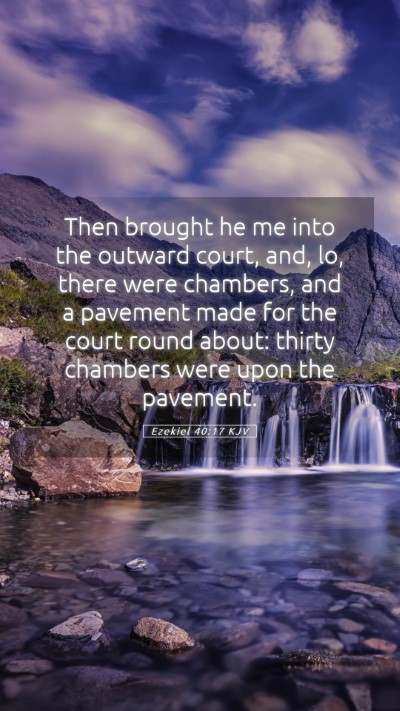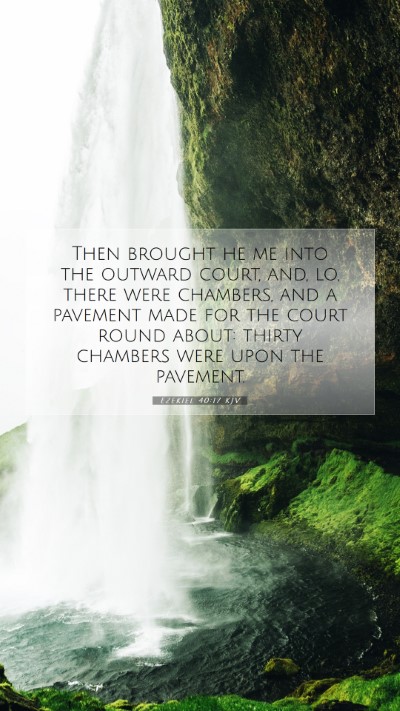Ezekiel 40:17 - Understanding the Scripture
Ezekiel 40:17 states: "Then he brought me into the outer court; and, lo, there were chambers, and a pavement made for the court round about: thirty chambers were upon the pavement."
This verse is part of a detailed vision that the prophet Ezekiel received regarding the future temple in Jerusalem. Through this vision, Ezekiel serves to convey profound spiritual and theological truths about God's presence, worship, and the restoration of Israel.
Bible Verse Meaning and Interpretation
The outer court mentioned in this verse symbolizes a place of separation where the sacred and the secular meet. The chambers and pavement indicate that this area is designed for both worship and daily activities associated with temple life.
Key Themes and Insights
- The Structure of Worship:
The architectural details describe the intended order and reverence of worship, emphasizing that worship is both a communal and individual experience.
- Symbolism of the Chambers:
The thirty chambers may represent the various functions of the temple, including the preparation of offerings, priestly duties, and the spiritual needs of the people.
- God's Provision:
The adequate space reflects God’s provision for His people, indicating that He desires a well-organized approach to worship and the life of His followers.
Historical Context
Understanding Ezekiel 40:17 requires considering the historical context of the Jewish exiles in Babylon. The vision describes a future restoration of Jerusalem and the temple, providing hope amidst despair. Ezekiel's attention to structure may serve as a reminder of the importance of divine order in worship, especially after the destruction of the previous temple.
Commentary Insights
According to Matthew Henry, the outer court is a threshold that signifies the approach to God, indicating that preparation and purity are essential in worship. Albert Barnes mentions that the chambers are likely intended for priests, providing ample space for those who serve in sacred duties. Meanwhile, Adam Clarke highlights that the pavement's mention suggests stability and permanence in the temple's design, reinforcing God’s everlasting covenant with His people.
Applications for Daily Life
The teaching found in Ezekiel 40:17 encourages believers today to understand the importance of structure in their spiritual lives. Just as the temple was designed with purpose and order, Christians are called to cultivate their lives in ways that honor God, reflecting intentionality in their worship and daily activities.
Cross References
- 1 Kings 6:1: Discusses the building of Solomon's temple.
- Ezekiel 41:1: Further description of the temple's inner sanctuary.
- Isaiah 66:1-2: Speaks to the Lord’s dwelling place and true worship.
Conclusion
In summary, Ezekiel 40:17 serves as a profound reminder of how God desires order and reverence in worship. By engaging in thorough Bible study insights, believers can uncover deep meanings and apply these teachings to their lives. As you explore this and other Bible verse meanings, consider how the principles established in the old sanctuary apply to the new temple of the heart—the indwelling of the Holy Spirit within believers today.
For those seeking to enhance their understanding, utilizing Bible study tools, Bible study resources, and engaging in online Bible study can provide further clarity and insight into challenging scriptures.


